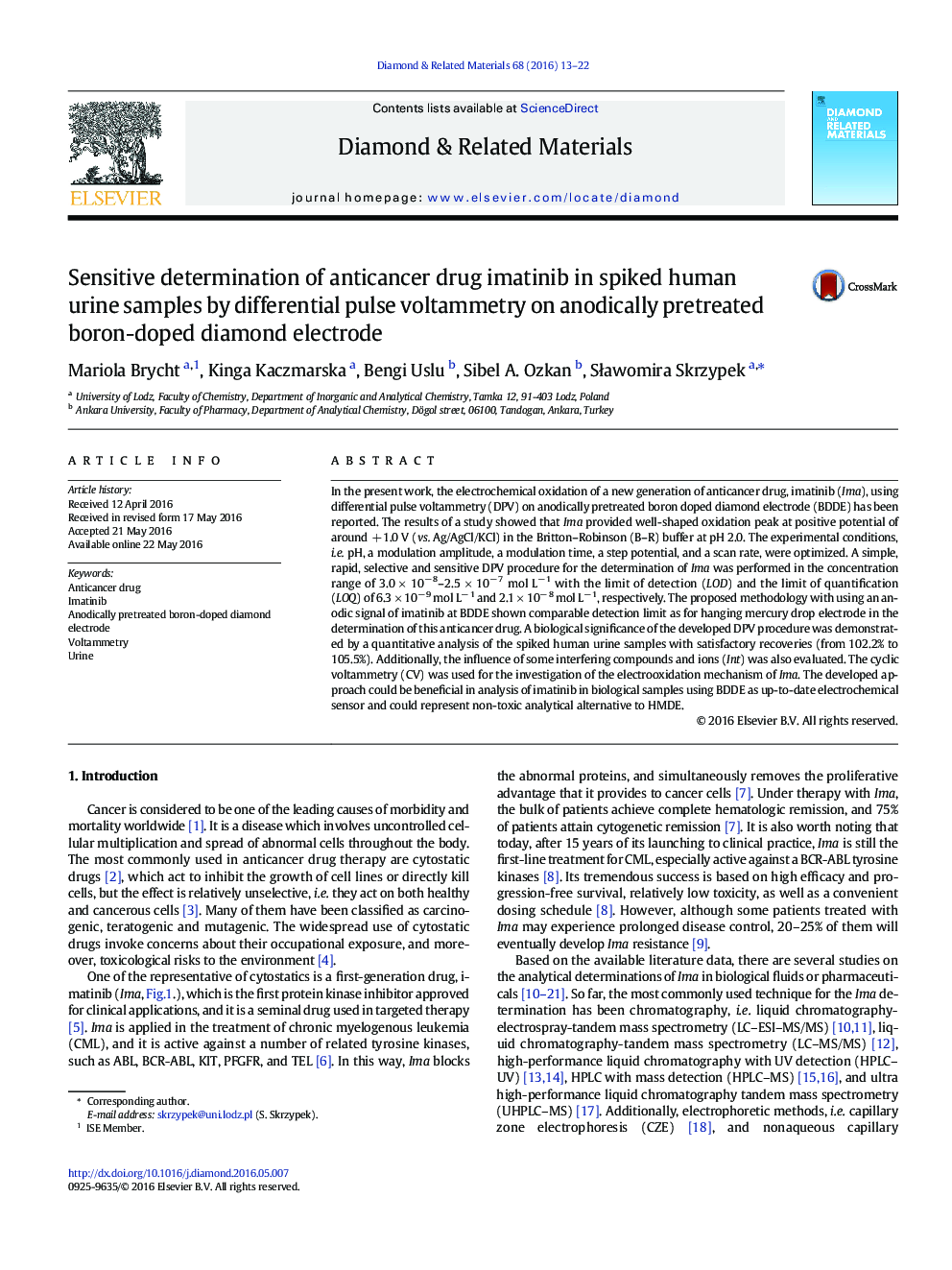| Article ID | Journal | Published Year | Pages | File Type |
|---|---|---|---|---|
| 701484 | Diamond and Related Materials | 2016 | 10 Pages |
•The oxidation signal of anticancer drug imatinib was investigated at BDDE.•In situ anodic activation of BDDE ensured highly reproducible signal of imatinib.•Sensitive DPV procedure for the imatinib determination was developed.•Application of anodically pretreated BDDE in spiked urine samples was performed.•Comparable LOD value over previously reported voltammetric methods was obtained.
In the present work, the electrochemical oxidation of a new generation of anticancer drug, imatinib (Ima), using differential pulse voltammetry (DPV) on anodically pretreated boron doped diamond electrode (BDDE) has been reported. The results of a study showed that Ima provided well-shaped oxidation peak at positive potential of around + 1.0 V (vs. Ag/AgCl/KCl) in the Britton–Robinson (B–R) buffer at pH 2.0. The experimental conditions, i.e. pH, a modulation amplitude, a modulation time, a step potential, and a scan rate, were optimized. A simple, rapid, selective and sensitive DPV procedure for the determination of Ima was performed in the concentration range of 3.0 × 10− 8–2.5 × 10− 7 mol L− 1 with the limit of detection (LOD) and the limit of quantification (LOQ) of 6.3 × 10− 9 mol L− 1 and 2.1 × 10− 8 mol L− 1, respectively. The proposed methodology with using an anodic signal of imatinib at BDDE shown comparable detection limit as for hanging mercury drop electrode in the determination of this anticancer drug. A biological significance of the developed DPV procedure was demonstrated by a quantitative analysis of the spiked human urine samples with satisfactory recoveries (from 102.2% to 105.5%). Additionally, the influence of some interfering compounds and ions (Int) was also evaluated. The cyclic voltammetry (CV) was used for the investigation of the electrooxidation mechanism of Ima. The developed approach could be beneficial in analysis of imatinib in biological samples using BDDE as up-to-date electrochemical sensor and could represent non-toxic analytical alternative to HMDE.
Graphical abstractFigure optionsDownload full-size imageDownload as PowerPoint slide
